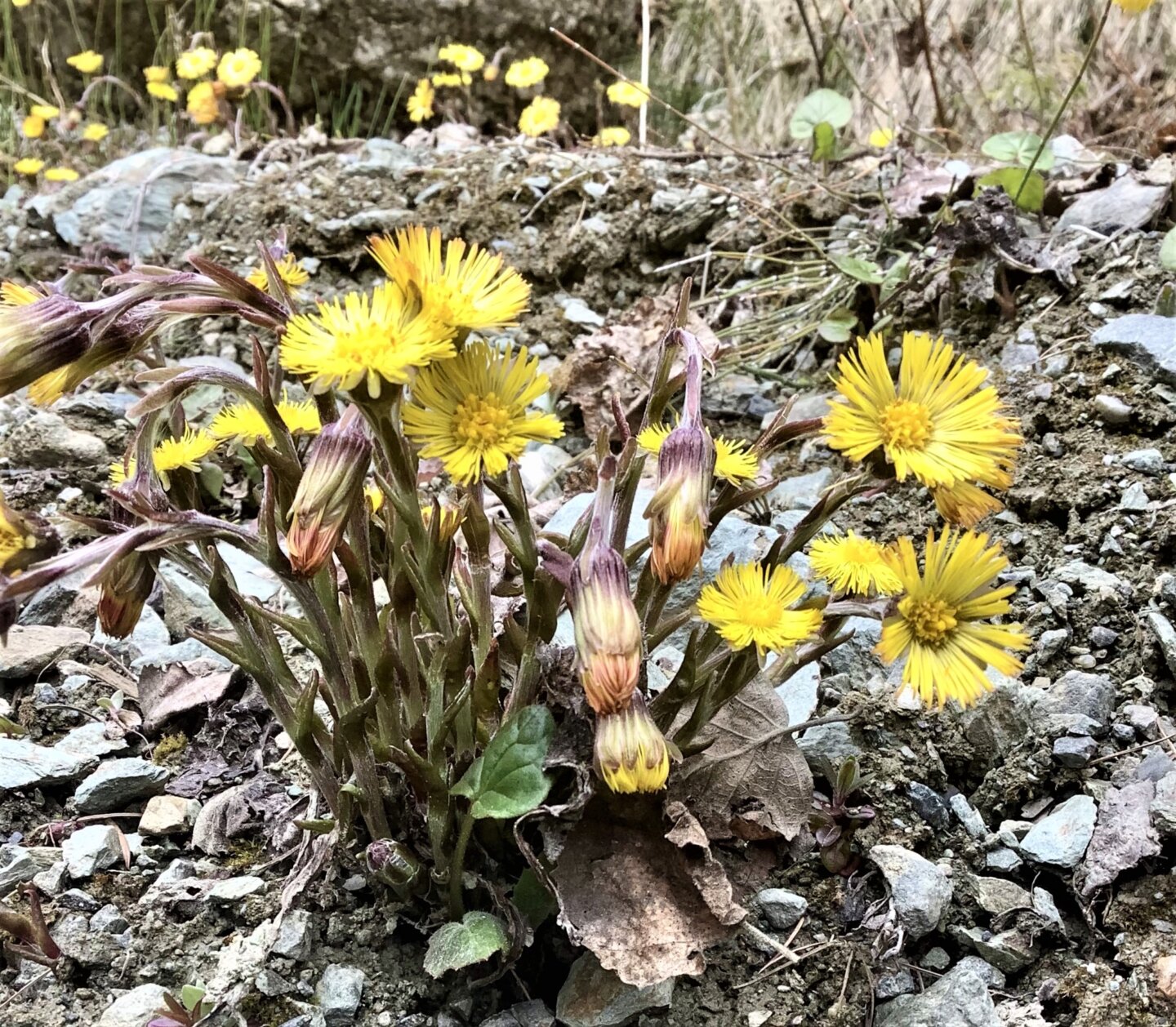Tussilago farfara
Description
- Herbaceous perennial that grows 5-50 cm tall
- Simple, erect, numerous stems
- Flowers in early spring before leaves appear
- Each flowering stem has a single, yellow, dandelion-like flower head
- Basal leaves appear just before/after flowers become fluffy dandelion-like seeds, and grow from rhizomes on long petioles, usually parallel to the ground
- Basal leaves are heart-shaped, slightly toothed, usually angular, and white-woolly (underside)
- Stem leaves reduced to purplish bracts (0.6-1.6 cm long)
Introduction and spread
- Native to Europe, North Africa, and parts of Asia
- Likely introduced to North America for medicinal purposes
- Can be found in most Canadian provinces, and is widespread in southern Ontario
- Clone-forming
- Spreads readily by seed and rhizomes
- Has spread in contaminated fill materials and in forests following fire
Consequences of invasion
- Invades moist, open/shaded, disturbed areas (e.g., stream banks, ditches, fields)
- Can also be found in drier sites and in areas of poor soil (e.g., roadsides)
- Forms extensive colonies, displacing native plants through competition
- Thrives in several agricultural crops, reducing crop yields
- Difficult to control due to extensive rhizomes that break off with soil disturbance
Status in the CKISS region
- Coltsfoot is currently classified as Contain on the CKISS Annual Priority List.
- It is present in some portions of the Kaslo Invasive Plant Management Area, but has not yet infested all potential habitats. The management goal is to contain this species to currently infested areas and to prevent further spread.
- Elsewhere in the region, coltsfoot is not known to occur or exists with very limited distribution.
- Please report sightings of this species, especially if it occurs outside of its containment area.
- To learn more about how CKISS classifies and manages invasive species, see our Invasive Species Priority Lists page.
Integrated pest management options
Prevention
- Do not plant this species. Learn about Grow Me Instead for native plant alternatives, and become PlantWise.
- Immediately revegetate bare, disturbed soils with a non-invasive seed mix to reduce invasion.
- Do not move contaminated soils to a new area.
- Clean your clothing, boots, vehicles, and equipment before entering/leaving an area.
Mechanical control
- Hand-pull small infestations, ensuring to remove the entire plant.
Chemical control
- It is best to stop the spread of coltsfoot when only a few patches are present and before it becomes widely established in an area (e.g., by tillage operations).
- Few herbicides are known to control coltsfoot adequately.
- Roundup and glyphosate have been shown to provide sufficient control.
Additional resources
- Coltsfoot | E-Flora BC
- Coltsfoot | King County – European coltsfoot ID and control
- Coltsfoot | Invasive Plant Atlas of the United States
- Coltsfoot | Ontario Ministry of Agriculture, Food, and Rural Affairs
- Coltsfoot | Midwest Invasive Species Information Network










